DMM HY-19E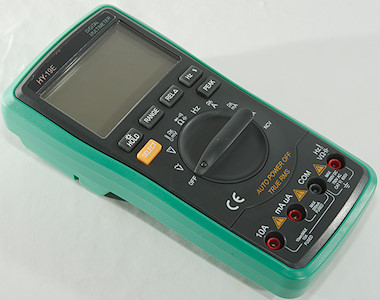
This is a fairly cheap DMM with 20000 count display.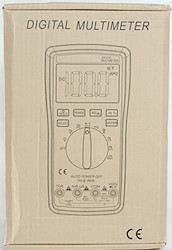

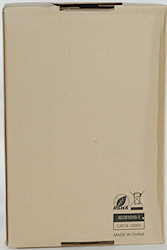

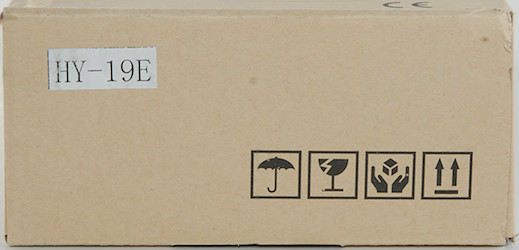
It arrived in a universal DMM cardboard box, the illustration do not match the meter.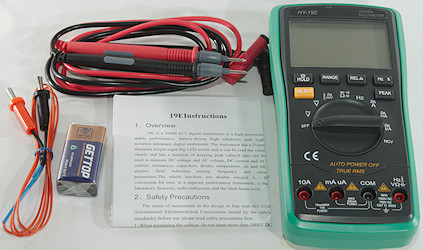
It included the DMM, a pair of probes, a thermocoupler and a couple of instructions sheets (manual).
The manual is without branding, it only says 19E
No tip covers on these probes that is rated for 1000V Cat III and 10A
This means the rating is wrong.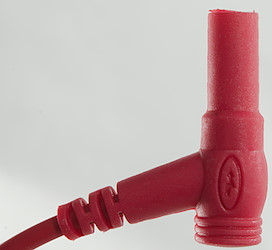
The plug is fully shrouded, but shorter than standard probes.

The thermocoupler is the typical cheap construction.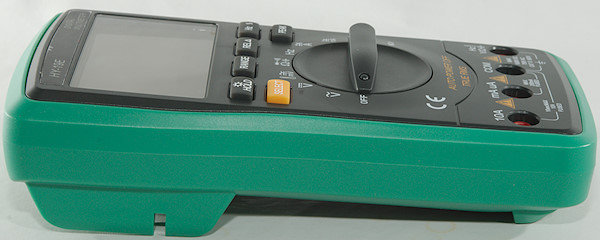
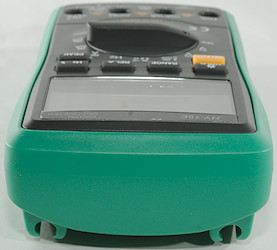
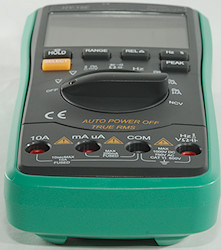
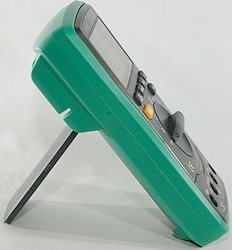
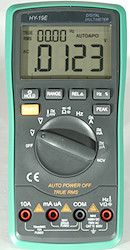
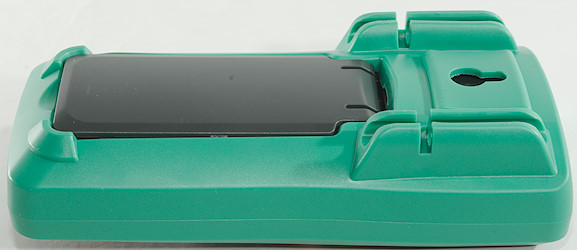
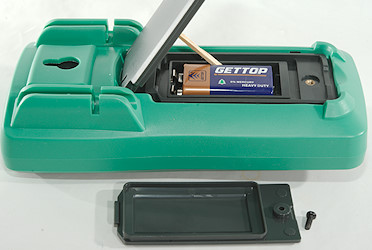
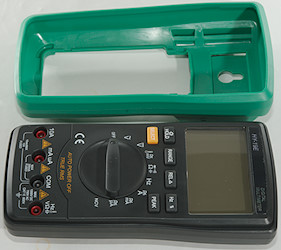
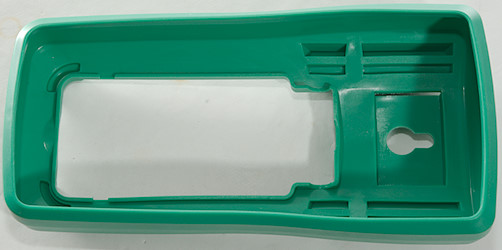
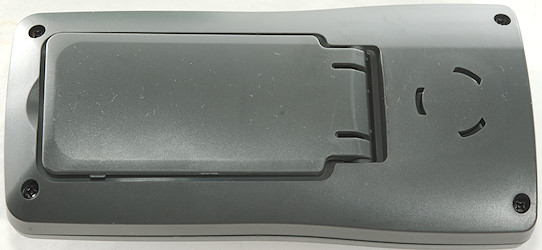
The polarity markings for the battery is not very easy to see, there is a small + and – symbol at the bottom of the battery box.
Display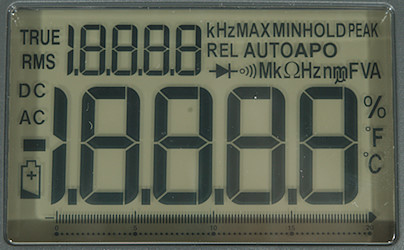
The above picture shows all the segments on the display.
It has two readouts and a bargraph at the bottom.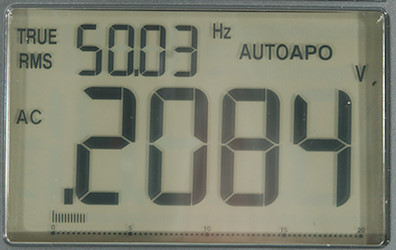
During AC Voltage or current measurement the secondary readout will show frequency.
The bargraph looks like it has many steps, but that is a cheat, it is grouped in 5 bar groups.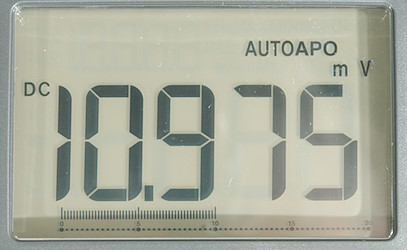
Typical display on other ranges.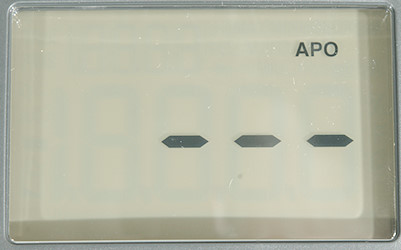
NCV shows dashes depending on the strength of the electric field.
Functions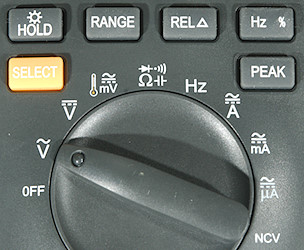
Buttons:
- Hold: Freezes the display, hold down for backlight.
- Range: Will disable auto range and change range, hold down to activate auto range.
- Rel: Shows values relative to current value, will also select manual range. Press again to disable.
- Hz %: Shows duty cycle in AC and frequency ranges (Frequency is already on the secondary display, but it will be turned off in duty cycle mode).
- Select (Yellow): Select between different function in mV and ohm settings.
- Peak: Shows a strange value, that has nothing with a peak or maximum value to do.
Rotary switch:
- Off: Meter is turned off
- VAC: Show AC voltage and frequency, using the Hz button duty cycle can be selected.
- VDC: Show DC voltage.
- mV: Show DC or AC mV. In AC the Hz % button will show duty cycle. This selection is also used for temperature.
![ohm]() : Resistance, continuity, diode and capacity.
: Resistance, continuity, diode and capacity.- Hz %: Frequency, use Hz button for duty cycle.
- A: Current AC and DC. In AC the HZ % button will show duty cycle.
- mA: Current AC and DC. In AC the HZ % button will show duty cycle.
- uA: Current AC and DC. In AC the HZ % button will show duty cycle.
- NCV: Volt Alert or electric field detection.
Input
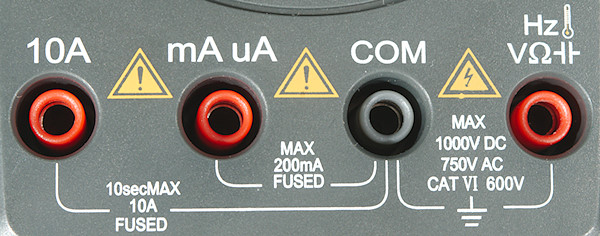
- 10A: High current, it can only withstand 10+ ampere for a short time (Fuse is 10A).
- mAuA: The lower current ranges, the selector switch will change between two different shunts (Fuse is 200mA).
- COM: The common terminal for all ranges.
- xxx: All other ranges.
Measurements
- Volt and frequency
- Frequency counter and duty cycle can only be selected in AC ranges and Hz range.
- At 100mVrms input frequency range is from 0.8Hz to 20MHz
- At 1Vrms input frequency range can be stretched to 19.999MHz
- Frequency is always auto range
- Duty cycle works from 2% to above 99% at 100kHz with 1Vpp, precision is within 0.2
- Peak can only be selected in AC mode. It do not capture peaks (I do not know what it do).
- 1 VAC is 5% down at 2.0kHz (RMS will not work at the frequency).
- Frequency counter requires a zero crossing
- Input impedance is 10-11Mohm on DC and AC
- mV range is high impedance for DC and 10Mohm for AC up to 2V, then then drop to 2kohm.
- Frequency input is 1-5Mohm below 2V and 2kohm above.
- Rated overload protection on mV and frequency is 550V DC/AC
- Rated overload protection on V is 1000V DC or 750VAC
- Frequency counter and duty cycle can only be selected in AC ranges and Hz range.
- Current
- Frequency counter and duty cycle can only be selected in AC ranges.
- uAmA input is protected by a 0.2A/250V 6.3×32mm ceramic fuse
- A input is protected by a 10A/250V 10×38mm ceramic fuse
- uA range has audible alert when current is very high (8mA)
- Frequency counter and duty cycle can only be selected in AC ranges.
- Ohm, Continuity, diode and capacity
- Ohm needs about 2.6s to measure 100ohm
- Ohm is 1V open and 0.38mA shorted
- Continuity is fast (About 20ms).
- Continuity beeps when resistance is below 50ohm.
- Continuity is 1V open and 0.38mA shorted
- Diode range uses 3.3V, max. display is 1.9999V at 0.7mA, max. current is 1.7mA shorted
- 10uF takes about 4.5 seconds to measure.
- 70000uF takes about 9 seconds to measure.
- Rated overload protection on is 550V DC/AC
- Ohm needs about 2.6s to measure 100ohm
- Miscellaneous
- Current consumption of meter is 2.6mA to 3mA depending on range (31mA with backlight)
- Meter works down to 2.3V where it will show about 3 times the value, battery symbol show at 5.9V.
- Reading are stable down to 3.2 volt
- Backlight works below 3.2V where it is a bit dim.
- The meter usual need a couple or more display update to reach the final value.
- Viewing angle is good.
- Display updates around 3 times/sec
- Bargraph works at same speed as the numeric readings.
- Backlight will automatic turn off in about 15 seconds.
- Will automatic turn power off in about 15 minutes (Holding HOLD down during power on to disable).
- Standard probes cannot be fully inserted, but they will work. Banana plugs can be fully inserted.
- Weight is 357g without accessories, but with rubber sleeve and batteries.
- Size is 183 × 90 × 46mm with rubber sleeve.
- Current consumption of meter is 2.6mA to 3mA depending on range (31mA with backlight)
- Probes
- Probe resistance 80mOhm for one.
- Probe wire is soft and 92cm long.
- Probe resistance 80mOhm for one.

A look at the capacity measurement waveform when measuring 1uF.

Frequency input resistance.

The AC tolerance is a bit misleading, 0.06% is only 12 count at 20000, i.e. the count is the significant factor here.
The AC range cannot handle large DC voltages.
Tear down
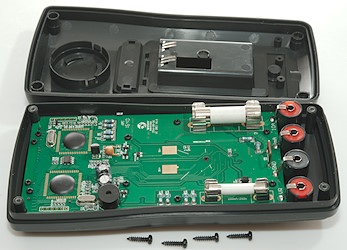
I had to remove four screws to open the DMM.
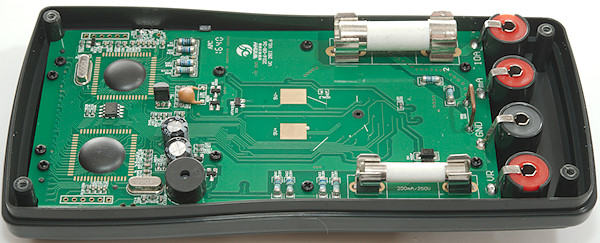
It has ceramic fuses.

The large one is rated for 380V and 100kA, the current rating is very impressive, but the voltage is too low for a 750VAC/1000VDC meter. On the circuit board below the fuse it says 10A/250V
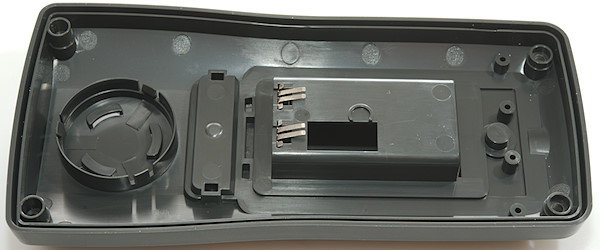

Circuit board is not shaped like the box, but is more rectangular.
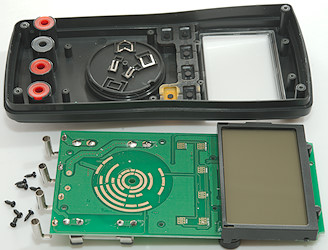
I needed to remove 8 small screws to get the circuit board out.
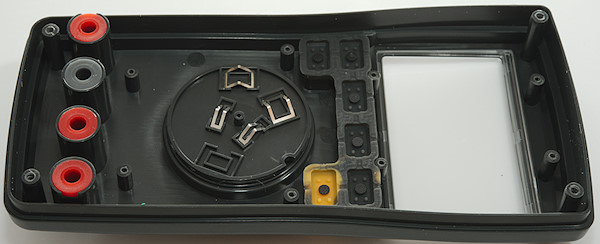
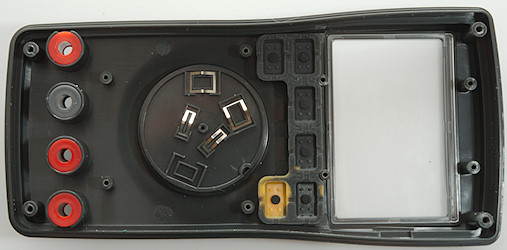
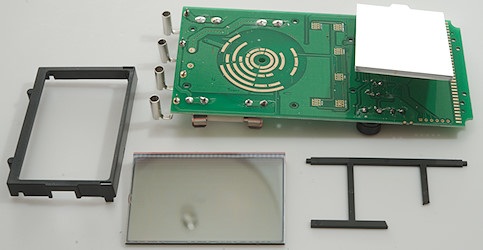
And two more for the display.
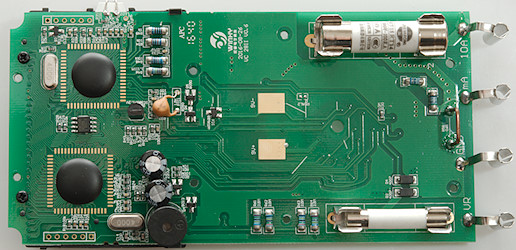
The two resistors beside the large fuse are mA and uA current shunts with diode protection (D3 & D4).
The voltage input shunt is 4 resistors (R61, R62, R63, R64: 4×2.5Mohm), isolation distance is a bit low between them. The input protection for ohms is a PTC (PTC1) and two transistors (Q5, Q6). The 9V supply is regulated with IC6.
The meter is built from a LCD driver/processor and a multimeter chip with a EEPROM for calibration and an external reference.
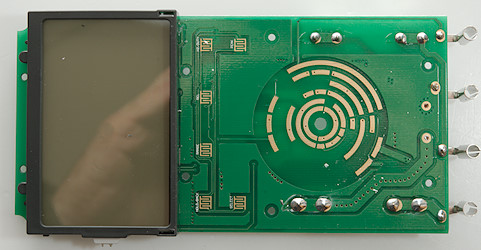
No parts on this side, only areas for the different switches.
But I am missing the NCV antenna. Playing with a mains wire around the meter it looks like the sensitive area is next to the HOLD and SELECT buttons. Looking at the circuit board there is a thin track there.
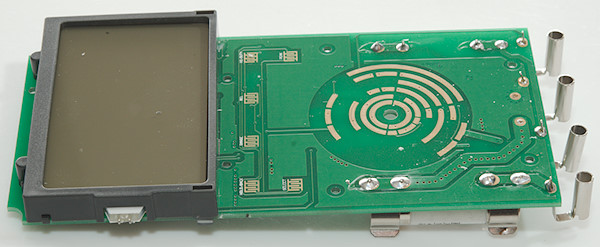
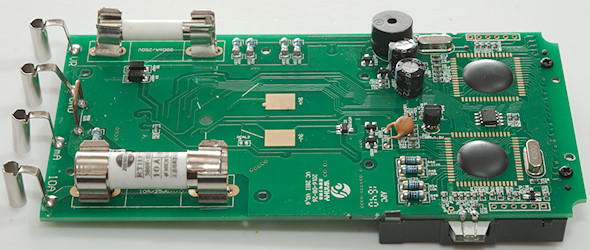
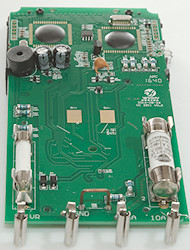
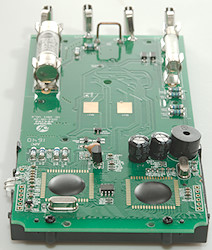
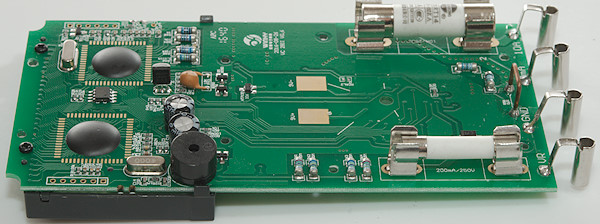
Conclusion
As usual on cheap(er) DMM’s the CAT rating is wrong.
Because the mA range only goes to 200mA the burden voltage is not that bad and it has a A range with even lower burden voltage that has more than enough resolution for higher mA. With this DMM the battery must be replaced when the battery symbol shows or there is a risk of wrong readings.
The PEAK function does not work on this meter.
The meter has all the common functions for a multimeter with exception of min/max. The NCV, dual display and bargraph are nice additions. There is some precision behind the higher resolution at least in VDC, ohms do also look very good.
Notes
This meter exist with many different names on it and small variations in functions.
How do I review a DMM
More DMM reviews
My website with reviews of many chargers and batteries (More than 1000): https://lygte-info.dk/
 : Resistance, continuity, diode and capacity.
: Resistance, continuity, diode and capacity.